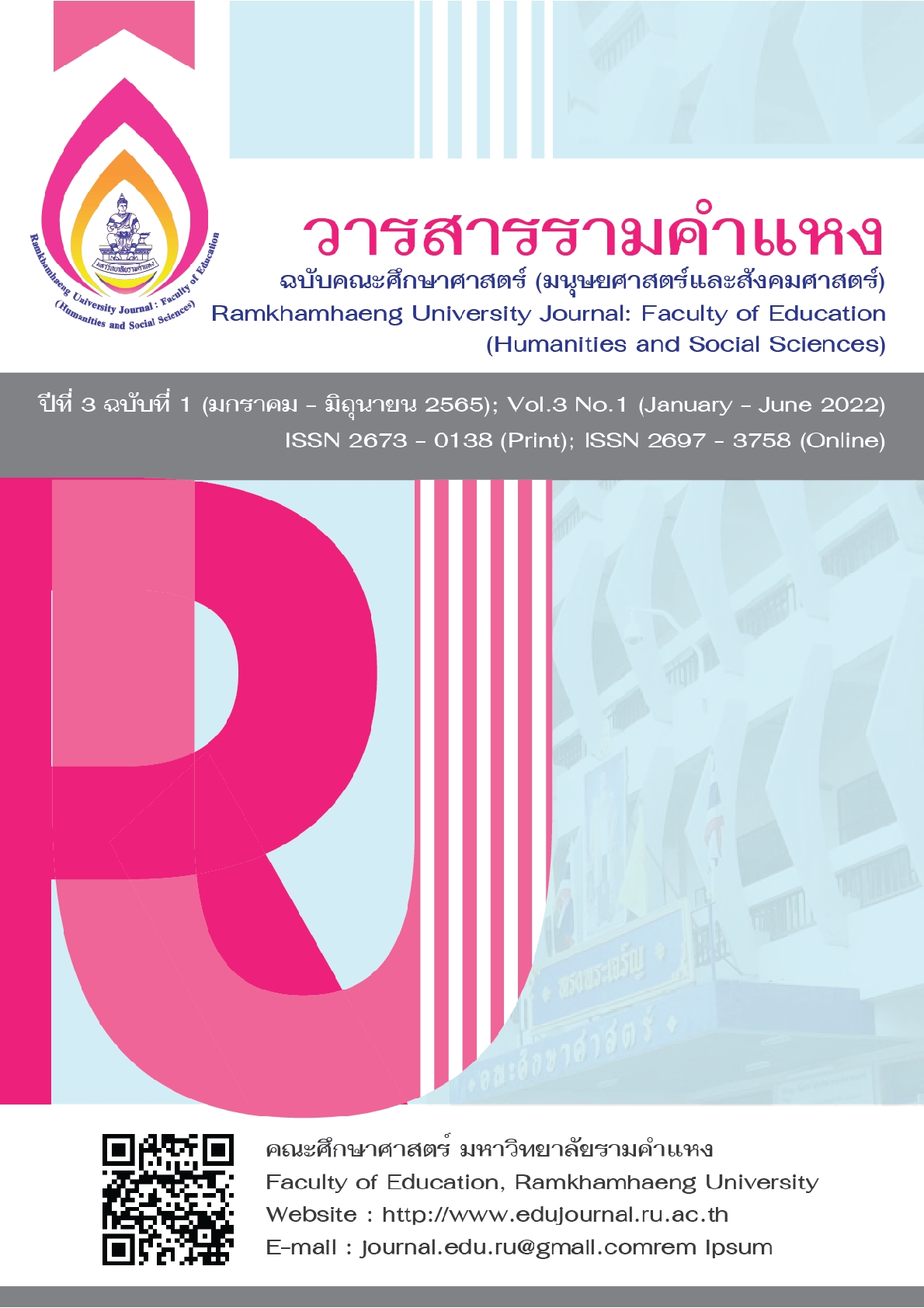รูปแบบความสัมพันธ์เชิงสาเหตุของการจัดการสถานศึกษาเอกชนเพื่อการพัฒนาอย่างยั่งยืน
Main Article Content
บทคัดย่อ
การศึกษารูปแบบความสัมพันธ์เชิงสาเหตุของการจัดการสถานศึกษาเอกชนเพื่อการพัฒนาอย่างยั่งยืน มีวัตถุประสงค์เพื่อศึกษาปัจจัยที่มีความสำคัญต่อการจัดการสถานศึกษาเอกชนเพื่อการพัฒนาอย่างยั่งยืน และเพื่อพัฒนารูปแบบความสัมพันธ์เชิงสาเหตุของการจัดการสถานศึกษาเอกชนเพื่อการพัฒนาอย่างยั่งยืน โดยเป็นการวิจัย แบบผสมผสาน ประกอบด้วยการวิจัยเชิงปริมาณจากกลุ่มตัวอย่าง คือ ผู้บริหารสถานศึกษาเอกชนระดับมัธยมศึกษา จำนวน 250 คน อาชีวศึกษาและอุดมศึกษา จำนวน 250 คน รวมทั้งสิ้น จำนวน 500 คน ใช้การสุ่มตัวอย่างแบบแบ่ง และขั้นตอนการสุ่มตัวอย่างแบบสุ่ม โดยใช้แบบสอบถามเป็นเครื่องมือในการศึกษา ส่วนของการวิจัยเชิงคุณภาพ ใช้เทคนิคการสัมภาษณ์เชิงลึกจากผู้เชี่ยวชาญและผู้ทรงคุณวุฒิ จำนวน 9 ท่าน ใช้วิธีการเลือกกลุ่มตัวอย่างแบบ เฉพาะเจาะจง โดยใช้แบบสอบถามแบบมีโครงสร้างเป็นเครื่องมือในการศึกษาและวิเคราะห์ตามสถิติ , SD, T-test และวิจัยเชิงลึก AMOS
ผลการศึกษาพบว่า (1) ปัจจัยที่มีความสัมพันธ์เชิงสาเหตุของการจัดการสถานศึกษาเอกชนเพื่อการพัฒนา อย่างยั่งยืน พบว่า ผู้บริหารสถาศึกษาเอกชนที่เป็นกลุ่มตัวอย่าง โดยภาพรวมมีความสำคัญอยู่ในระดับมาก เมื่อพิจารณาเป็นรายด้าน พบว่า ปัจจัยด้านโครงสร้างองค์กร เป็นปัจจัยที่มีความสำคัญการจัดการสถานศึกษาเอกชน เพื่อการพัฒนาอย่างยั่งยืนสูงสุดเป็นอันดับแรก โดยมีความสำคัญอยู่ในระดับมาก รองลงมาคือ ปัจจัยด้านทรัพยากรบุคคล ปัจจัยด้านการบริหารองค์กร ปัจจัยด้านภาวะความเป็นผู้นำ และปัจจัยด้านแผนแนวทาง โดยมีความสำคัญอยู่ในระดับมากตามลำดับ (2) รูปแบบความสัมพันธ์เชิงสาเหตุของการจัดการสถานศึกษาเอกชนเพื่อการพัฒนาอย่างยั่งยืน พบว่า (2.1) ปัจจัยด้านการบริหารองค์กร ส่งอิทธิพลตรงต่อปัจจัยด้านโครงสร้างองค์กร ที่ค่าน้ำหนัก เท่ากับ 0.30 นอกจากนั้นยังส่งอิทธิพลตรงต่อปัจจัยด้านกลยุทธ์ ที่ค่าน้ำหนัก เท่ากับ 0.31 และส่งอิทธิพลตรงต่อปัจจัยด้าน ทรัพยากรบุคคล ที่ค่าน้ำหนักเท่ากับ 0.87 ที่นัยสำคัญทางสถิติที่ระดับ 01 และ (2.2) ปัจจัยด้านทรัพยากรบุคคล ส่งอิทธิพลตรงต่อปัจจัยด้านกลยุทธ์ ที่ค่าน้ำหนักเท่ากับ 0.70 นอกจากนั้นยังส่งอิทธิพลตรงต่อปัจจัยด้านโครงสร้างองค์กร ที่ค่าน้ำหนักเท่ากับ 0.71 และยังส่งอิทธิพลตรงต่อปัจจัยด้านภาวะความเป็นผู้นำ ที่ค่าน้ำหนักเท่ากับ 0.99 ที่นัยสำคัญทางสถิติที่ระดับ .01
Downloads
Article Details

อนุญาตภายใต้เงื่อนไข Creative Commons Attribution-NonCommercial-NoDerivatives 4.0 International License.
ผู้ส่งบทความ (และคณะผู้วิจัยทุกคน) ตระหนักและปฎิบัติตามจริยธรรมการวิจัยอย่างเคร่งครัด ทั้งนี้บทความ เนื้อหา ข้อมูล ข้อความ ภาพ ตาราง แผนภาพ แผนผัง หรือข้อคิดเห็นใดๆ ที่ปรากฎในบทความ เป็นความคิดเห็นและความรับผิดชอบของผู้ส่งบทความ กองบรรณาธิการไม่จำเป็นต้องเห็นตามเสมอไป และไม่มีส่วนรับผิดชอบใดๆ โดยถือเป็นความรับผิดของของเจ้าของบทความเพียงผู้เดียว
เอกสารอ้างอิง
Akbar, A. (2012). The role of leadership in human resource management-proposing conceptual framework of advanced leadership model. Interdiscriplinary Journal of Contemporary Research in Business, 4(6), 979-989.
Arbuckle, J. L. (2011). AMOS 20.0 users guide. Crawfordville: Amos Development Corporation.
Hashmi, K. (2014). Human resource management strategies and teacher’s efficiency within schools: A co-relational study. The IAFOR Journal of Education, 2(1), 65-87.
Herbert, H. G., & Gullett, C. R. (1967). Management. New York: McGraw–Hill.
John, N. (2015). Strategies for effective school leadership. Global Journal of Education Studies, 1(1), 45-51.
Korbi, K. (2015). Leaership and strategic change. The Journal of Organizational Management, 7(2), 28-39.
Lunenburg, F. C. (2011). Leadership versus management: A key distinction a least in theory. Interdiscriplinary Journal of Contemporary Research in Business, 14(1), 1-4.
Ministry of Education, Office of the Education Council Secretariat. (2015). Competency in Thai education in the international arena 2015. Bangkok: Author. [In Thai].
Office of the National Primary Education Commission. (2017). Research Report for Developing Quality Assurance System in Educational Institutions. Bangkok: Author. [In Thai].
Phonprasert, W. (2011). Concepts of strategic management. Retrieved October 30, 2021, from http://www.stou.ac.th/Schools/Shs/upload/หน่วยที่1ชุดวิชา%2058708.pdf [In Thai].
Rothaermel, F. T. (2013). Strategic management: Concepts and cases. New York: McGraw-Hill.
Saratana, W., & Saratana, A. (2002). Management factors and learning organization proposal of research results for development and criticism. Bangkok: Aksara Phiphat. [In Thai].
Smith, M. (1971). Educational leadership: Culture and diversity. Gateshead: Athenaeum Press.
Stoner, A. F., & Wankel, C. (1986). Management (3rd ed.). New Delhi: Prentice Hill.
Suphachok-udomchai, T., Jindasamutra, P., Chalakbang, W., & Hamsupo, S. (2015). Educational administration strategy to enter into the ASEAN community for the implementation by schools under the offices of secondary education service areas in the Northeast of Thailand. Journal of Education Graduate Studies Research, Khon Kaen University, 9(1), 25-34. [In Thai].
Tippamom, S., Phengsawat, W., Chalakbang, W., & Satheannopakaow, P. (2016). A development of strategic administration model affecting the effectiveness of middle-sized school under the office of secondary educational service area office in the Northeast Thailand. Ratchaphrurk Journal, 14(3), 114-131. [In Thai].
Tonwimonrat, S. (2015). Administrative model of provincial university library network forInnovative organization. Veridian E-Journal, Silpakoen University, 8(1), 88-128. [In Thai].
Wheelen, L. T., & Hunger, J. D. (2012). Strategic management and business policy: Toward global sustainability (13th ed.).
Boston: Pearson. Yougjin, S. (2013). Elements of strategic management process and performance management systems in U.S. federal agencies: Do employee managerial levels matter. International Journal of Business and Management, 8(9), 114-129.
Yukl, G. (1998). Leadership in organization. Englewood Cliffs, NJ: Prentice Hall.


